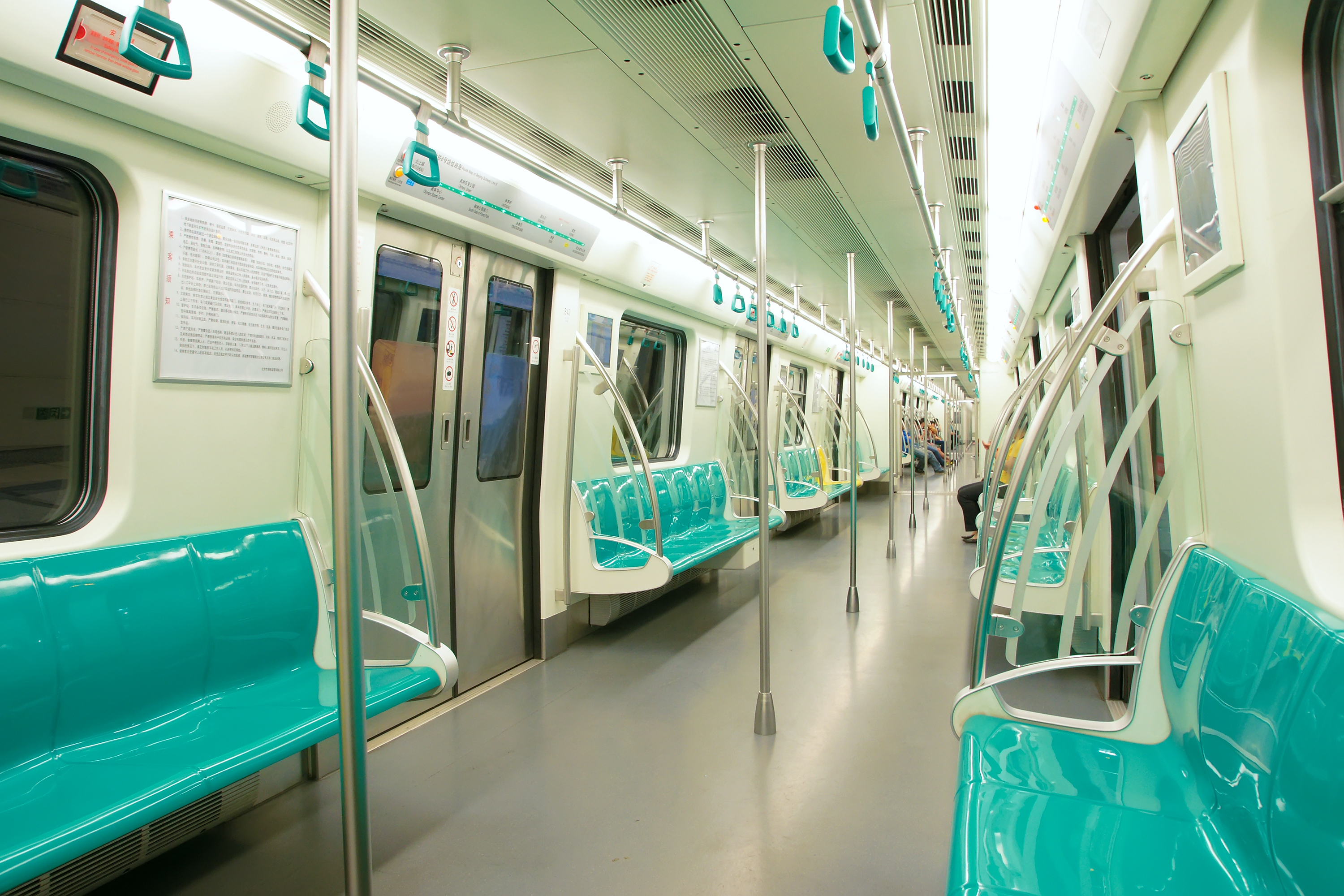Airports, train stations, and ports became the starkest reminders of COVID-19’s impact. First in China, and then around the world, the transportation web that powers our global economy ground to a halt as we sheltered inside to protect against an unseen enemy.
However, as we sheltered in place, COVID-19 has provided economies around the world with a chance for reflection, a chance to identify areas where innovation could create lasting gains in sustainability.
China is no exception.
Modern Chinese society has shown great adaptability through decades of economic transformations and is already embracing new opportunities to not only enhance efficiency but also improve sustainability in the “new normal” post-COVID-19.
China has already accepted some new norms as it has reemerged from the lockdown, including stricter maximum occupancy regulations, regular temperature testing, and ubiquitous mask-wearing, but these practices have no real impact in the species-wide effort to stem climate change.

Entrepreneurs in the country’s tech sector have been agile to capitalize on new opportunities presented by the pandemic to expand their user bases and enhance monetization. Going forward into the post-virus era, could Chinese entrepreneurs seize gains in efficiency while being more environmentally responsible?
Sustainable Innovation
COVID-19 has spurred an e-commerce boom sweeping across the world, as people rely heavily on delivery services. Even before the pandemic, China’s massive e-commerce ecosystem grew from 14 billion units delivered in 2014 to over 60 billion units in 2019.
The sheer resources required to transport that many items make its carbon output unsustainable, not to mention the mountains of packaging waste that have accumulated.
However, changes are trying to be made, as Beijing implemented a strict recycling and waste sorting protocol following a successful pilot in Shanghai in July 2019. Such a stark change in waste-removal policy caught many residents off-guard at first, due to unfamiliarity with the new procedures, but the system slowly became normal among Shanghai’s population of nearly 25 million people.
China has also prioritized the development of its renewable energy infrastructure, as the country weans itself off of coal energy generation in favor of cleaner, more efficient alternatives. At the Two Sessions in May, new energy initiatives were included under the national directive to upgrade “new infrastructure”.
Read more: This is what Chinese tech tycoons brought to the table at China’s Two Sessions

COVID-19 decimated the travel industry, with hotels and airlines likely facing long roads to recovery. However, this stark decline in carbon-intensive travel consumption could spawn an era of increased consumption responsibility, with climate change concerns playing a larger role in discretionary decisions.
Logistics
E-commerce is a significant driver of waste in the consumption-driven economy. In 2019, JD.com (NASDAQ:JD) launched the China E-Commerce and Logistics Packaging Standards Alliance with the goal of minimizing packaging waste.
Beijing-based Ponhu Luxury infuses elements of sustainability directly into its e-commerce business. The firm, which specializes in recycled luxury items, closed its Series B fundraising round to the tune of RMB 175 million (USD 24.7 million) in May. A strategic partner of JD.com, Ponhu aims to lead a wave of second-hand retail in China, where the circulation of second-hand items lags far behind mature markets like the US and Japan.
At China’s top political gathering in May, the Two Sessions, Zhang Jindong, chairman of retail giant Suning.com (SHE: 002024) proposed that urban governments should grant more licenses to new energy light trucks, to cut the pollution caused by China’s high-volume delivery and logistics sectors.
Zhang, also an NPC deputy, explained that Suning would shift its strategy in new retail from quantitative expansion to efficiency enhancement, in-line with China’s national directive for increased tech sophistication. The company has already rolled out 5G-enabled unmanned delivery vehicles during the pandemic.
In fact, establishing and popularizing green logistics networks, which are low carbon, environmentally friendly solutions to logistics, aligns very well with the Chinese government’s call for an industrial upgrade. Freight transport in China accounts for about 700 million tonnes (Mt) of CO2 emissions, around 67% of the nation’s total transport-related emissions.
Alibaba’s Cainiao logistics network has started to roll out more unmanned delivery vehicles in residential and university communities in Shanghai, Tianjin, Zhejiang, and Sichuan. These autonomous couriers are powered by electricity as opposed to gasoline.
Cainiao Post is a division of Cainiao which operates a network of neighborhood stations, campus stations, and smart pick-up lockers. Its neighborhood stations alone experienced robust growth, with delivery volume increasing over 100% year-on-year (YoY) during March as demand for contactless delivery soared during the outbreak in China.
Alibaba first debuted its smart lockers in 2018, but saw widespread adoption during the pandemic.
Also, Guangzhou-based aerial drone maker Ehang (NASDAQ:EH) received permission from The Civil Aviation Administration of China (CCAC) to use its air taxis for heavy-lift logistics. The Ehang 216 air taxi is capable of transporting over 150kg of cargo. The company has previously collaborated with DHL Express on autonomous drone delivery.
While the industry is still relatively immature, the company’s air taxis are battery-powered with no carbon emissions, compared to most ground transport which still relies on fossil fuel. If more entrants intensify competition in the space, raising overall standards, then air logistics and mobility has the potential to alleviate pollution-causing traffic congestion in urban areas.
Emboldened by the new license, Ehang’s CEO Hu Huazhi hopes to prompt the wider commercialization of air logistics and mobility solutions, which could result in an entirely new eco-friendly logistics channel.
According to Frost & Sullivan, the global aerial logistics sector is estimated to grow to USD 46.1 billion by 2023, with China accounting for 45% of the share of the market.

New Energy
Although China is the world’s largest consumer of coal, it also leads other countries in investment in renewable energies such as wind and solar. To increase the efficiency of its transient renewable energy resources, China will increase its storage capacity for renewables by 400 megawatts this year, about four times the amount in 2019, according to estimates by BloombergNEF.
At the recent Two Sessions, Suning’s Zhang called for the creation of a data hub platform that could easily manage and service these new energy vehicles (NEVs), and connect them to the country’s expanding new energy infrastructure which totaled 36,000 charging stations at the end of 2019. However, less than 10% of public charging facilities were used in 2018, according to industry association China EV100.

Chinese Premier Li Keqiang also announced at the Two Sessions that the government will promote the further construction of EV charging infrastructure to improve sluggish sales.
Still, decimated by the impact of the pandemic, sales of NEVs declined for a ninth straight month in March, according to data from the China Association of Automobile Manufacturers (CAAM), down over 50% YoY. Fang Yunzhou, NPC deputy and chairman of Zhejiang Hezhong New Energy Automobile said that “new energy vehicle companies are facing life and death in 2020”.
In April, Chinese authorities decided to extend subsidies for NEV purchases by two additional years, in a move to boost the country’s tumbling NEV sector, KrASIA reported.
More established players in the electric vehicles sector like US-listed Nio (NYSE: NIO), experienced hardship during the shutdown but predicts a strong recovery leading to record vehicle deliveries in the coming quarters. Meanwhile, Tesla’s growing presence in the Chinese market will augment industry standards in a competitive sector.
Travel consumption
China’s swelling travel industry was ravaged by the COVID-19 pandemic after 20 years of constant expansion on the back of a growing middle class.
Shanghai-based Trip.com (NASDAQ: TCOM), the world’s largest online travel agency, suffered a 62% YoY decline in revenue from accommodation bookings and a 29% YoY decrease from transportation bookings. The company forecasts negative revenue growth to persist and accelerate, projecting between a 67% and 77% YoY decline for the second quarter of 2020.
Meituan-Dianping (HK:3690), another of China’s leading travel platforms, was also devastated by the pandemic. Domestic hotel room nights consumed during the first quarter fell by 45.5% YoY.
The Hotel Sustainability Benchmarking Index 2019 shows that a hotel room in China emits 14,392 kg of carbon dioxide emissions per year on average, more than double that of the United States. In terms of annual emissions from global travel, Chinese travelers are the second-worst polluters after Americans.

According to a report from Travel Daily, 70% of Chinese hoteliers surveyed reported sales declines of at least 20% YoY, while 67% said that occupancy fell by 20% or more, and 26% of hotels said that the average room rate has fallen by over 20% YoY.
While the sharp decline in the hotel sector will cause economic hardship for the over 1.78 million hospitality employees in China, it will also result in a sizeable slash to carbon emissions.
Hilton Hotels, which operates 255 properties in China, reopened in May armed with its new CleanStay initiative in partnership with cleaning product company Lysol and medical information platform Mayo Clinic.
The CleanStay initiative centers around extra disinfecting of hotel property, increasing the use of cleaning supplies while limiting occupancy in public spaces. Hilton also is focused digitizing using contactless check-in, removing certain paper amenities and pens from rooms, using a digital key, and enhancing the functions of their mobile application.
The more stringent procedures in China’s hospitality sector are likely to dampen demand while simultaneously restricting occupancy, reducing the negative impact of the industry on the environment.
An inflection point
As stock markets sank and borders were barricaded during the pandemic, carbon emissions dwindled as well, by as much as 25% in China during the two-month manufacturing pause in February and March. Meanwhile, distance learning and remote working further reduced the demand for transport.
The most strident climate optimists foretold of a unique opportunity to implement systemic change and create inherently greener economies. Enhanced logistics, greater commitment to renewable energy, and reduced travel consumption are all positive indicators that if continued could spur China’s transition to a greener economy.
However, reports have already emerged that pollution levels have begun to rebound in China, signaling that the highly anticipated economic revival in many countries is likely to erase any progress made in curbing emissions during the shutdown.
In March, China announced that it would extend the deadlines for companies to meet environmental standards as the country rejuvenates its economy, prompting worries of a restart that neglects climate concerns.
According to Cao Liping, director of the Ecological and Environmental Enforcement Bureau at the Ministry of Ecology and Environment (MEE), this will not mean a relaxing of standards. Cao insisted that the outbreak period can be used to make high tech upgrades and enhance sustainability.
Companies with low emission levels will be exempt from on-site checks, while assessments have been simplified. Over 300,000 firms and 55,000 projects are set to benefit from the policy according to estimates from the MEE.
As Asia’s largest economy reawakens, China has the unique opportunity to either embrace or shun environmental concerns and set an example for the rest of the world.
